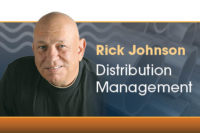Hiring is not easy
Have the right approach and ask the correct questions.

The first thing we need to establish before going through any job interview is the objectives of the selection process.
Interviewing should not be just about filling an open position. Anytime you have an opening to hire someone, you have an opportunity to build bench strength, organizational effectiveness and introduce fresh ideas and new insights into the organization. It doesn’t matter what level in the hierarchy the opening exists in. Consider the following key objectives of the selection process.
1. Filling the immediate opening with an individual with the required skill sets.
2. Building a talent pool for future job openings at higher levels in the organization. Promotion from within is a building block for unity, cohesiveness and validation of respect for employees. Make sure you select the best based not only on current skill sets but also on future potential for individual growth.
3. A cultural fit. Developing or maintaining a specific cultural identity should be a consideration. Teamwork and camaraderie are essential to success. Personality profiling can help you determine if the job candidate will “fit in” to your organization. Peer interviews of final candidates can also prove beneficial.
The team interview approach
When a job opening occurs, it is an opportunity to do a job function analysis to determine if the current scope of authority and responsibility are in alignment with departmental and corporate objectives. A hiring team made up of the department supervisor, a human resources representative and another department manager that has a stake in the functions performed by this particular job injects balance and insight into the hiring process. Of course, HR does all the initial screening of candidates based on the qualifications and skill sets outlined by the manager the candidate will report to. It is very possible these job requirements will change based on the job function analysis. In fact, I have seen cases where the entire job has changed and even the person the job candidate reports to can change. Don’t overdo this and have six or seven people interviewing candidates. By the time a decision is made under that concept the candidate may well be long gone.
Face reality
Hiring the right individual with the right skill set, the right attitude, and the right personality to fit in can be one of the most challenging endeavors any manager will ever face. Leveraging your chance of success by using the team approach, profile testing and seriously checking references helps. But if you have several qualified candidates, it’s still like flipping a coin. You can’t be positive about your choice until you see the individual in action. Sometimes it takes months, even years to see the real person you hired whether it’s really good or really bad. Finding the really bad ones months after you have hired them can be extremely expensive.
Face it. What you are trying to accomplish in the selection process is to predict the way an individual will behave in the future in your environment working for a specific manager. The question that needs to be answered is – “How will this candidate perform X job in department Y at your company?”
Obviously, you can’t predict the future behavior of any individual with a high degree of accuracy, regardless of testing, interviews or reference checking. No one can. However, you can study the environment he or she will be working in. Your odds of success dramatically improve if you have done your homework on the candidate, and if you have leaders and not just managers who understand coaching and mentoring.
By the way, nobody ever provides a reference on a resume from someone who isn’t going to sing glowing praises. If you really want more realistic references, call the candidate’s former employers and ask to talk to someone in the department the candidate worked in. You may even be able to get some names while you are interviewing the candidate through casual conversation.
Remember, prediction of a candidate’s future behavior can be based on the assumption that people tend to behave con-sistently under similar circumstances. Knowledge of present and past behavior is derived by asking the right questions during an interview and doing thorough reference and background checks.
Four keys to a successful interview
1. Know everything possible about the job that needs to be filled. Don’t depend solely on a written job description. Define the requirements for both good performance and exceptional performance. Try to anticipate the leadership skills required regardless of the position’s responsibility level.
2. Do your homework. Find out as much as possible about your final candidates. Check references (including some not listed by the candidate), do a background check, analyze the data on the application and the resume, and collect as much data during the interviewing process as possible. Using the team approach for separate interviews allows you to collaborate and compare answers and opinions.
3. Match the candidate’s skills/qualifications to the job requirements and evaluate his future developmental potential. This process should utilize structured questions to solicit and evaluate the candidate’s level of skills that match the skill requirements of the particular job.
4. Make your decision based on the evaluation of all data as well as the collaboration between individual interviewers.
E-mail rick@ceostrategist.com for sample job descriptions or a sample interview guide that provides the following:
- What an interview team should know about job requirements;
- What an interviewer should try to discover during an interview;
-
A basic understanding of the interview process including:
- Interview objectives
- Conducting the interview
- Sample thought provoking questions;
- Evaluating the candidate using the data collected; and
- A pre-interview question guide with a list of legal and
- illegal questions to help you avoid problem areas.
This is not a comprehensive list and is not intended to give legal advice.
HELPFUL LINKS
Looking for a reprint of this article?
From high-res PDFs to custom plaques, order your copy today!






